By SYDNEY J. FREEDBERG JR.
Lockheed Martin’s proposal for the Terrestrial Layer System (TLS) cyber/EW/SIGINT vehicle.
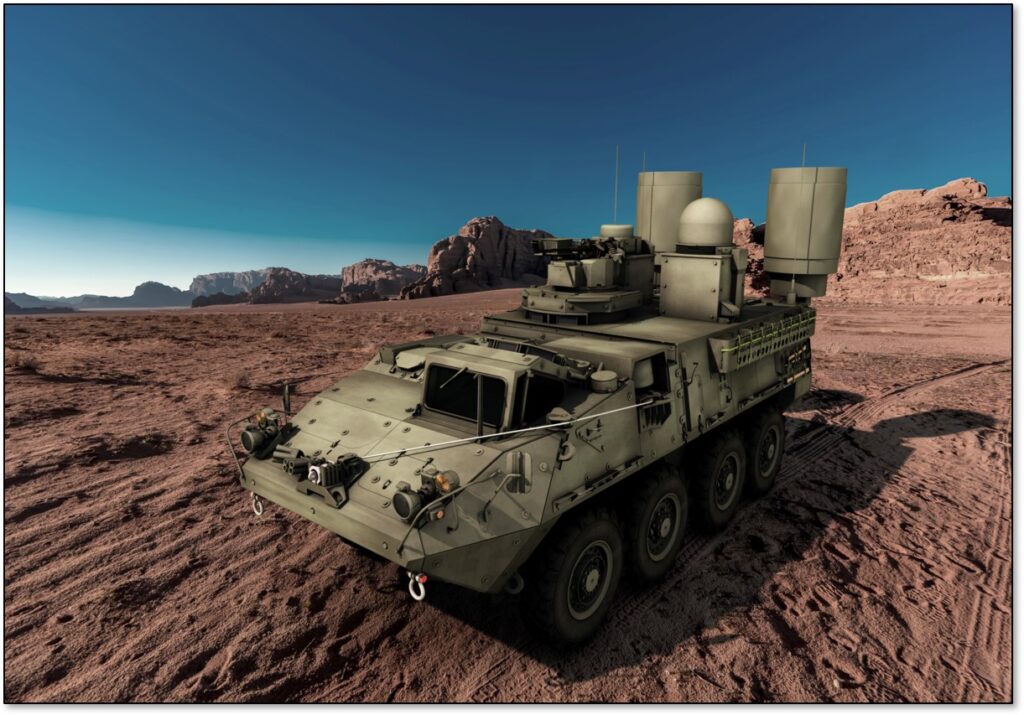 WASHINGTON: Army jargon can be notoriously bland, but Terrestrial Layer System may take the cake. Behind the nondescript name, however, is an ambitious program that will challenge the high-tech titans now competing to manufacture it: Boeing and Lockheed Martin.
WASHINGTON: Army jargon can be notoriously bland, but Terrestrial Layer System may take the cake. Behind the nondescript name, however, is an ambitious program that will challenge the high-tech titans now competing to manufacture it: Boeing and Lockheed Martin.
Boeing subsidiary DRT got a $7.6 million Other Transaction Authority contract in April to build TLS prototypes; Lockheed got its $6 million OTA in May. Both firms are now busily integrating their electronics onto Army-provided 8×8 Stryker armored vehicles.
“The advancement of the state of the art is really in two areas,” Boeing executive Paul Turczynski told me. “You hear a lot about ‘convergence,’ but this is really the first program that brings together the SIGINT, the EW and the cyber. And the second major difference from other programs is the open architecture.”
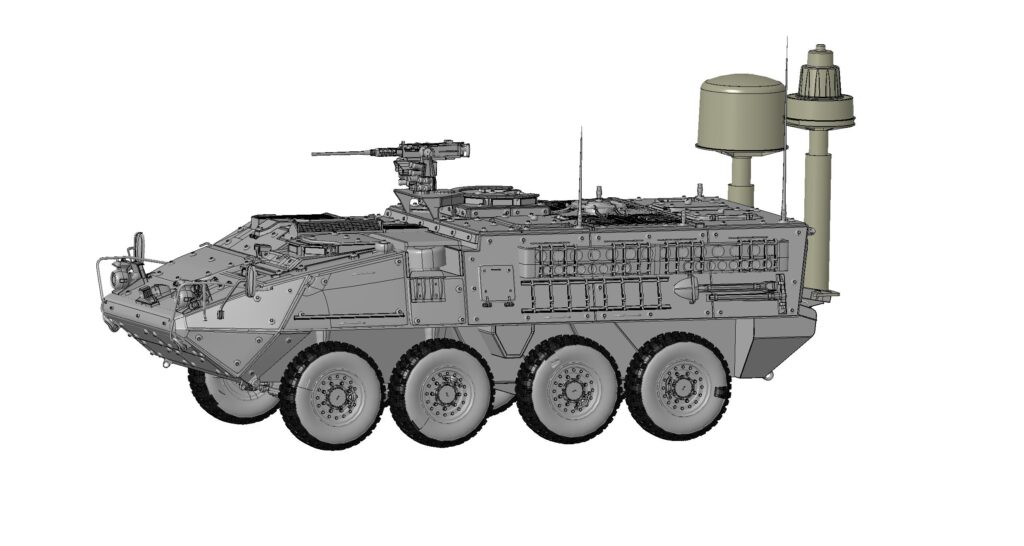
Boeing DRT’s proposal for the TLS cyber/EW/SIGINT vehicle
TLS won’t just be a long-range ground-based jammer, the first such system to enter widespread service in the US in decades. That would be a big deal by itself, since – aside from a handful of urgently fielded experimental systems – the US has for decades got by with a mix of high-powered aerial systems and short-range ground systems, the latter specifically designed to disable radio-controlled IEDs.
As CMMC, the DoD cybersecurity compliance program, continues to evolve, will prime contractors and their subcontractors be ready for assessment and certification?
But TLS is also supposed to be a cyber weapon and a signals intelligence collector. That means TLS will have three very different options once it detects an transmission: keep listening and try to decrypt it (SIGINT), try to connect to the enemy wireless network and hack into it (cyber), or transmit a jamming signal to disrupt the enemy’s communications (electronic warfare).
The US has never before built such a hybrid. While Lockheed Martin is also developing a drone-borne jammer for the Army, MFEW-Air-Large, that cyber/EW system does not include the SIGINT capability.
What’s more, it’s not enough for a single TLS vehicle or MFEW drone to operate alone. Each must share data nigh-instantaneously across a network of Army systems, all united by common standards for data, software, and hardware. This unified approach, called modular open systems architecture, should also allow the Army to plug-and-play upgrades from any company – not just whichever one wins the TLS contract – as long as their product meets the standards.
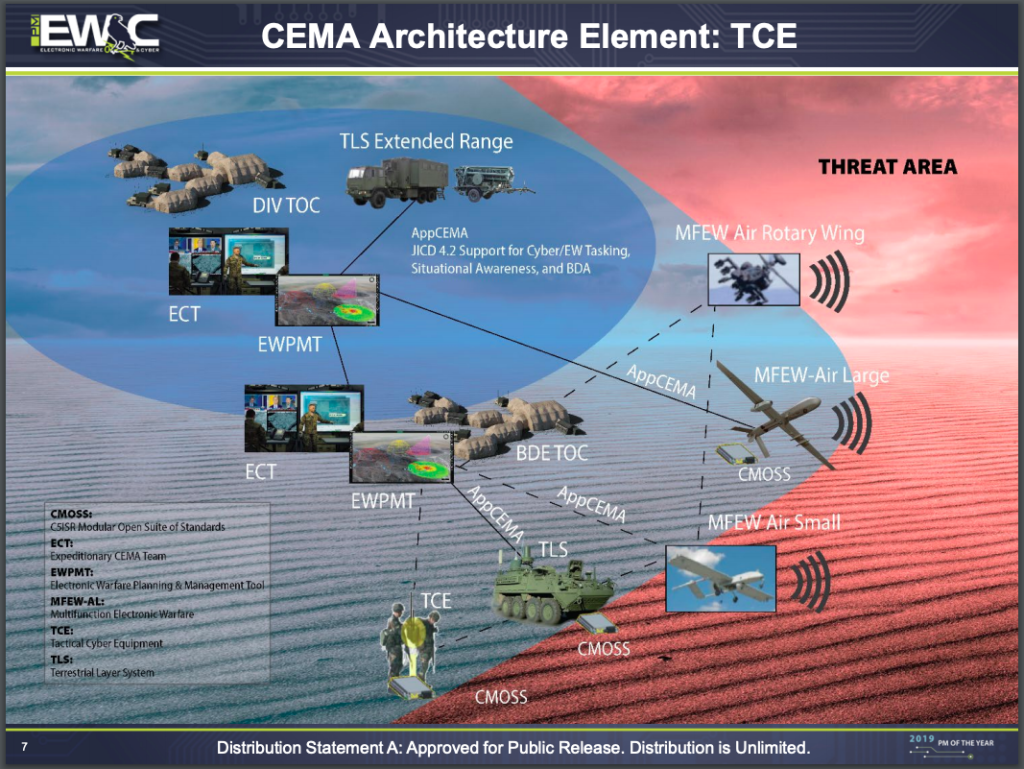
Each of the Army’s future jammers plugs into a larger electronic warfare network.
“We really like the CMOSS open architecture standards that were established by the Army,” Lockheed exec John Wojnar told me. “You can take out a vendor card A and put in a vendor card B, seamlessly….As new antennas come along, no matter if they’re from vendor A, B or C, you take the old one out, you put the new one in; as long as it has the modular open RF architecture compliance built into it, you’re good to go.”
The 2022 budget “probably looks to be flat,” Vic Mercado, assistant secretary of defense for strategy, plans and capabilities, says. “We still have to look to the future, maybe take some risks in the near-term, and make some investments in those technologies that we’re going to need in the future like hypersonics, artificial intelligence.”
“It gives the Army a lot more flexibility down the road,” Wojnar said.
For TLS, Lockheed is offering a ground-based variant of its Silent Crow technology, which was also the basis of its winning bid for MFEW-Air-Large. But a ground-based system presents some very different technical challenges than an aerial one, Wojnar told me.
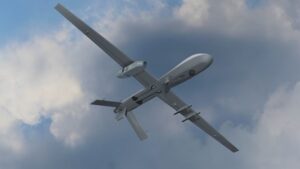 Lockheed Martin’s Silent Crow cyber/electronic warfare pod on an Army MQ-1C Grey Eagle drone. Silent Crow is the basis for MFEW-Air-Large (Lockheed illustration)
Lockheed Martin’s Silent Crow cyber/electronic warfare pod on an Army MQ-1C Grey Eagle drone. Silent Crow is the basis for MFEW-Air-Large (Lockheed illustration)
Airborne systems like MFEW, the Navy Growler, and the Air Force Compass Call can redeploy wherever they’re needed much faster than a ground vehicle. Their altitude lifts them above obstacles like hills and buildings that might block transmissions to and from the ground, giving them a clearer view over a wider area and open lines of fire for their electronic attacks.
But being up in the air also has its downsides. Transmitting over the longer distances involved requires a lot more power — and aircraft are already burning fuel every second of flight. Even a long-endurance drone can’t stay in position as long as a ground vehicle, and being above all obstacles means it’s easier for any enemy with radar to detect you and shoot you down.
By contrast, a TLS unit can park in a covered position, drape some camo netting over their vehicles, and keep silent watch for enemy signals as long as the commander requires.
Terrain that hides the TLS from the enemy can also mask the enemy’s transmissions from TLS, however. Even on open ground, you can’t see objects hidden by the horizon, which is much closer if you’re at ground level than if you’re in the air. That limits the range of even the most powerful ground-based system.
Being at ground level also potentially puts TLS amidst a welter of distracting signals, from friendly soldiers’ radios to civilian cell towers, that its algorithms must carefully sort through to find the enemy emitters. Fortunately, a ground vehicle also has a lot more room to carry computers, large-aperture sensors, and human analysts than an aerial system of comparable cost.
Army Electronic Warfare Tactical Vehicle (EWTV)
Not everything is easier to fit on a ground vehicle, however, said Boeing’s Turczynski, whose company helped build some of the experimental ground-based systems the Army has already fielded in small numbers, like the Electronic Warfare Tactical Vehicle. The superstructure of a Stryker or other armored vehicle is typically a lot more cluttered than the clean lines of a plane or drone, making it tricky to fit all the antennas needed without things getting in each others’ way.
“On aircraft, on ships, there’s a lot more real estate to do antenna placement,” he said. “[On ground systems], it’s going to be a little more difficult where you place it, what you do to mitigate the interference.”
The other tricky thing to fit into TLS is the mix of classified and unclassified systems required to do SIGINT and cyber/electronic warfare on the same platform, Turczynski told me. “You’re going to have multiple security domains within that confined space,” he said, “so how do you do that and keep everything separate, but have the information available to the systems and subsystems that need it?”
MFEW-Air-Large doesn’t have this particular problem, since the airborne system is for cyber/EW only.
To confront a high-tech threat like Russia or China, the Army needs both kind of system. Airborne systems can sweep wide areas and detect threats from a distance, then pass the data to ground-based units to move in and follow up at closer range and for a longer time. But in many ways, the Terrestrial Layer System is the bigger technical challenge.
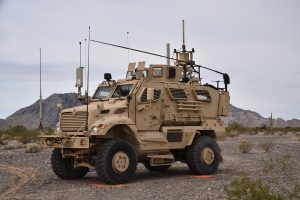
No comments:
Post a Comment